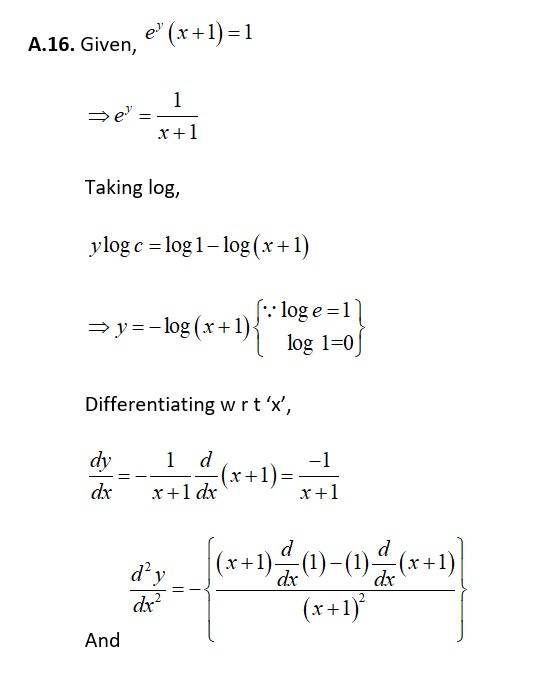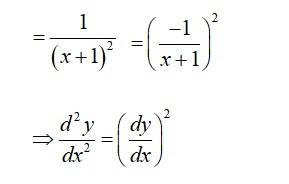Maths
Get insights from 6.5k questions on Maths, answered by students, alumni, and experts. You may also ask and answer any question you like about Maths
Follow Ask QuestionQuestions
Discussions
Active Users
Followers
New answer posted
6 months agoContributor-Level 10
The given D.E. is
Hence, is a homogenous of degree 2.
To solve it, let
The D.E. now becomes,
Integrating both sides,
Put
is the required solution of the D.E.
New answer posted
6 months agoNew answer posted
6 months agoContributor-Level 10
Let 'x' be the number of bacteria present in instantaneous time t.
Then,
constant of proportionality.
Integrating both sides,
Given, at
So, the differential equation is
As the bacteria number increased by 10% in 2 hours.
The number of bacteria increased in 2hours
Hence, at t=2,
So,
Hence,
then we get,
New answer posted
6 months agoContributor-Level 10
Let P and t the principal and time respectively.
Then, increase in principal
Integrating both sides,
At, t=0, P=1000
So,
And at t=10,
P = ?1648
New answer posted
6 months agoContributor-Level 10
Let P, r and t be the principal rate and time respectively.
Then, increase in principal
Integrating both sides,
Given at t=0,P=100
So,
And at
So,
Hence, the rate is 6.931%
New answer posted
6 months agoContributor-Level 10
So,
Differentiating again w r t 'x' we get,
Hence proved.
New answer posted
6 months agoContributor-Level 10
Let 'r' and U be the radius and volume of the spherical balloon.
Then, k = constant
Integrating both sides,
Given at t = 0, r = 3
So, 4π(3)3 = c
C = 36π
And, at t=3, r=6
So,
Hence, putting value of c and k in,
, we get,
New question posted
6 months agoNew answer posted
6 months agoContributor-Level 10
The slope of tangent is and slope of line joining line (-4,-3) and point say P(x,y)
So,
Integrating both sides,
Since, the curve passes through (-2,1) we get,
The equation of the curve is
Taking an Exam? Selecting a College?
Get authentic answers from experts, students and alumni that you won't find anywhere else
Sign Up on ShikshaOn Shiksha, get access to
- 65k Colleges
- 1.2k Exams
- 679k Reviews
- 1800k Answers




